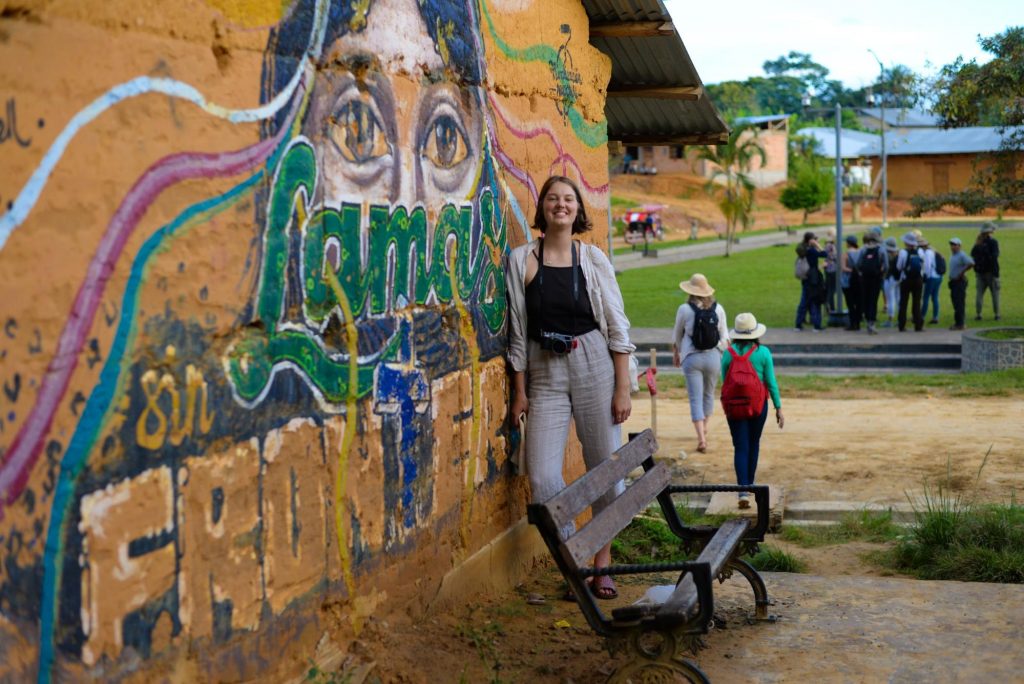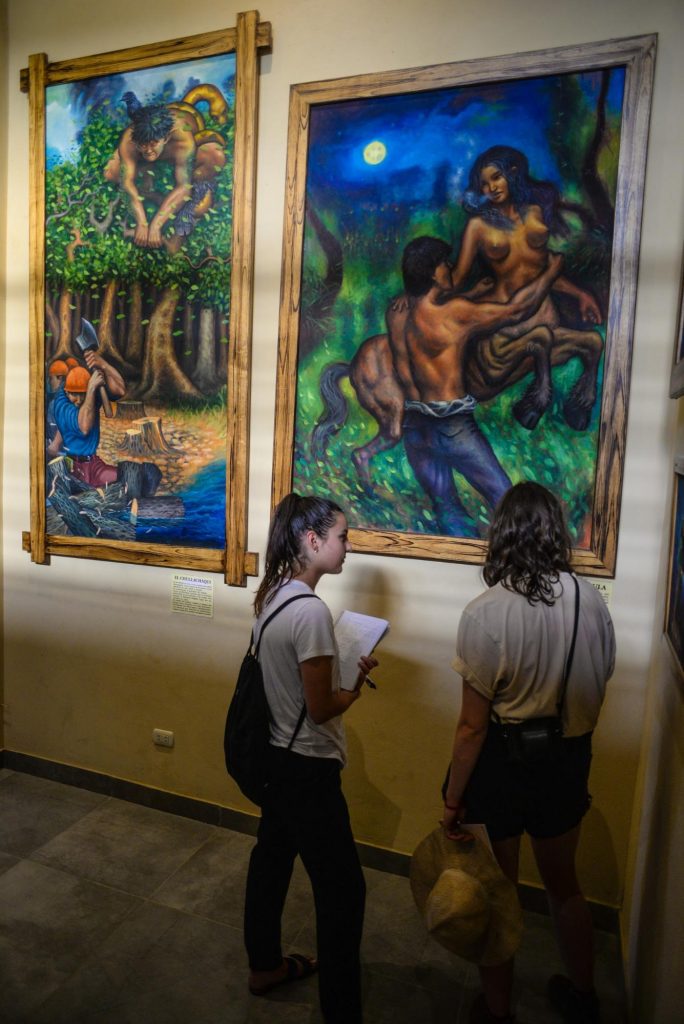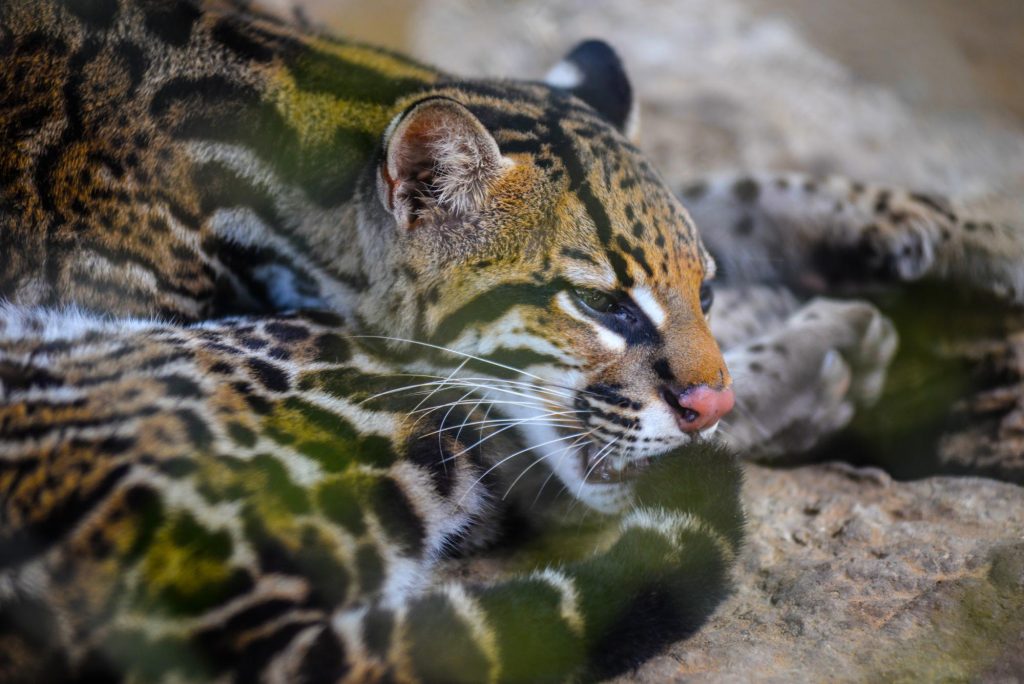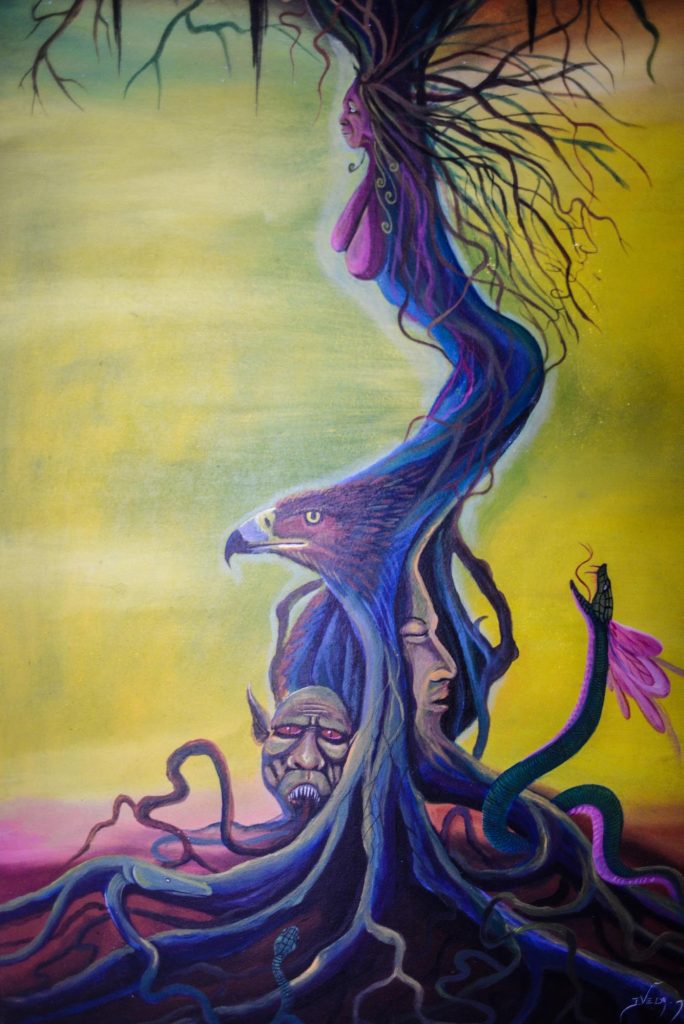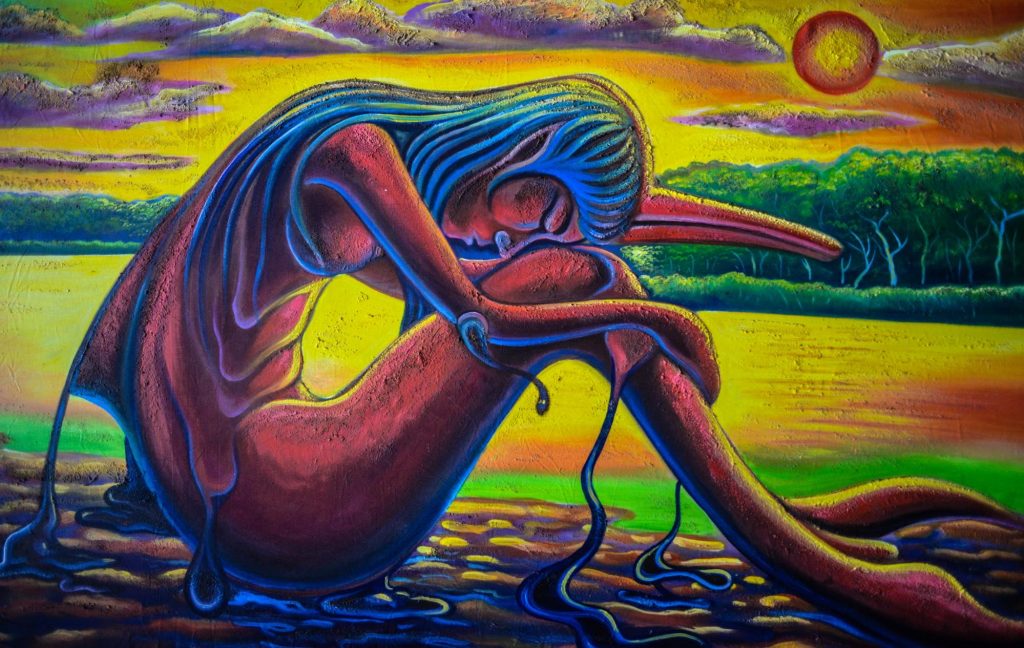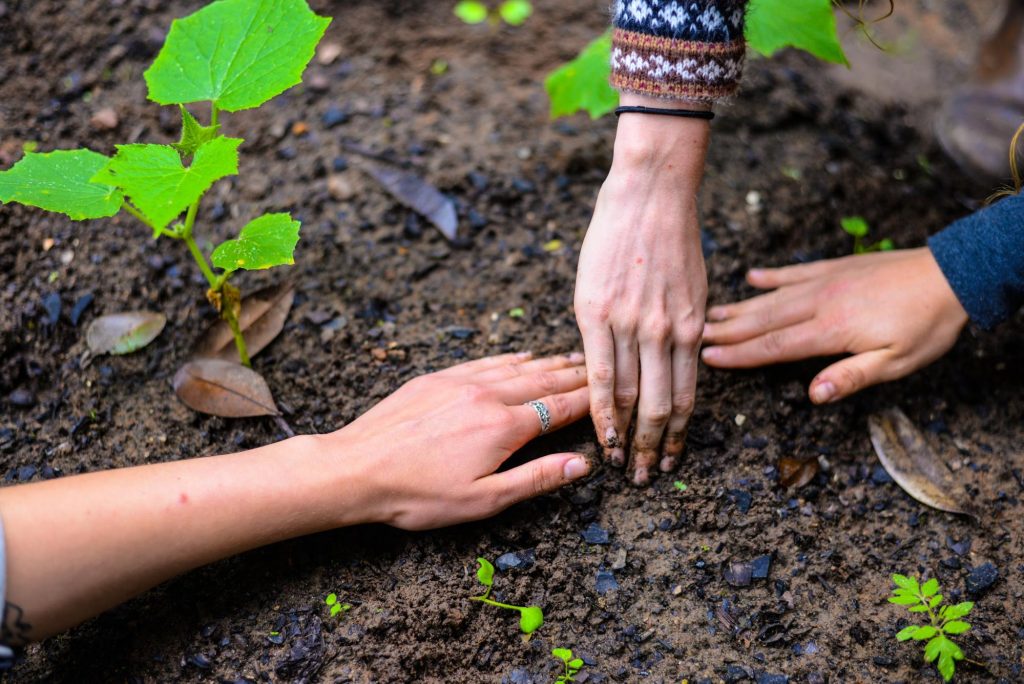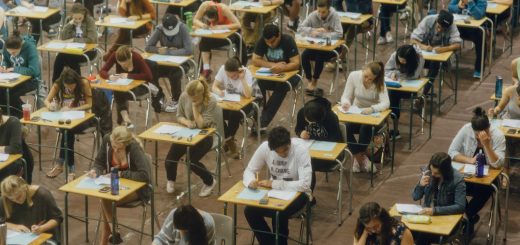Field School in Peru: The Legend of Chullachaqui
Guest post by Mike Graeme
With the long, excited build-up for this UVic Environmental Studies field school in Peru, finally arriving in Lamas is like a dream—is it real?! The students start filtering in and we can already tell we are a perfect fit of a cohort—but then again when is this not the case for an ES field school!
A central reason I enrolled in post-secondary in the first place was because I had read about the high rates of deforestation in the Amazon and wanted to do something about it. This being the last class of my university degree, I have come full circle. We have reached the epicenter of deforestation in Peru.
The Sachamama Centre for Biocultural Regeneration, where our Sustainable Indigenous Economies & Ecologies field course is being held, is in Lamas in the Department of San Martín, which has the highest rates of deforestation in the country. I am eager to get to the bottom of the causes of deforestation and stay up reading until the roosters start their rowdy 4am wake-up call.
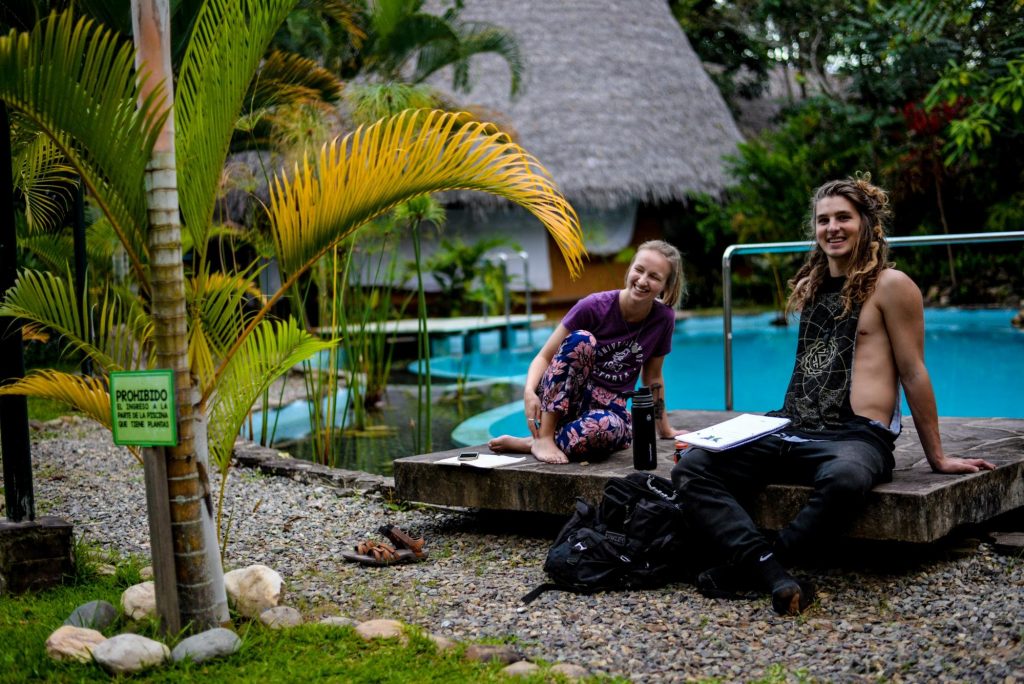
Students Nicole and Logan don’t have far to go to take a refreshing break from studying in the Sachamama Centre’s pool.
In my readings I learn big industrial and commercial ventures are downplayed in mainstream thought as a cause for deforestation, for they are framed as representing “progress” and “development.”
Meanwhile, many in dominant Peru society blame the campesinos and Indigenous farmers clearing the forest for firewood or for slash-and-burn agriculture—a food growing system that arose after conquest and isn’t sustainable with dense human populations. Indeed, San Martín has the highest rates of migration in the country as well. But why?
It is then that I start learning about the mejora resettlement policies, where the Peruvian government enacted a series of laws encouraging inhabitants of the Andes to come clear the “unoccupied” lands of the Amazon rainforest. Those migrating were told to clear land to claim it as their own, ignoring the Indigenous inhabitants of the area.
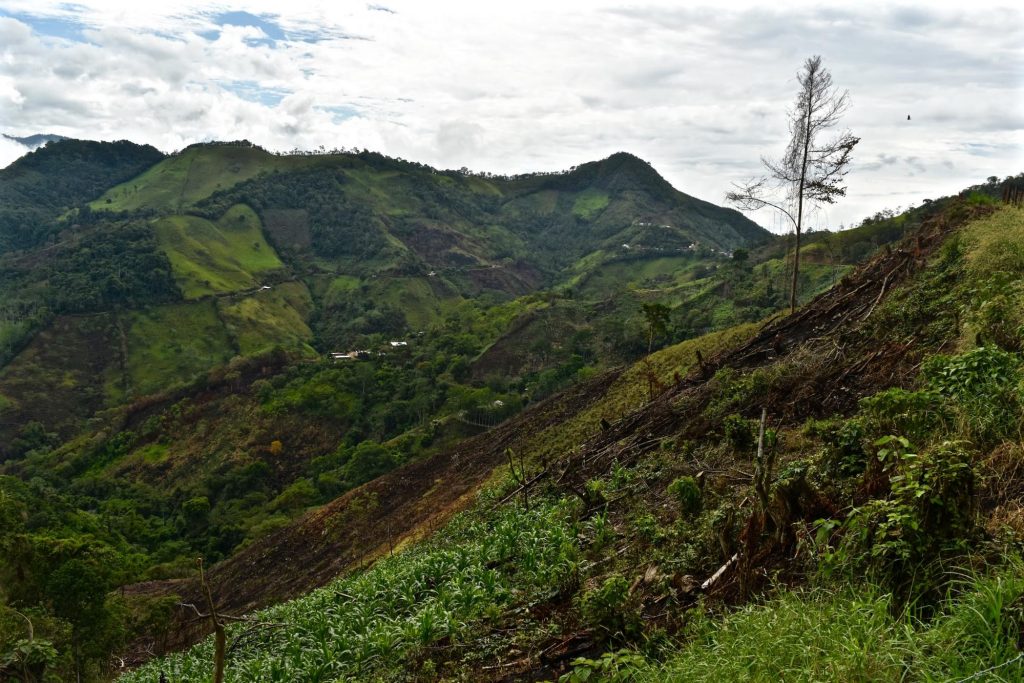
Mass deforestation of the Amazon comes with a suite of ecological costs, including both contributing to and increasing susceptibility to climate change.
With the government putting in laws that expedite deforestation, I wonder about the Indigenous government systems. What regulations were here before and are here still?
My question begins to be answered when our class goes on one of our first field trips to visit El Museo Chanka, a local museum. I learn that in the Indigenous Kichwa-Lamista worldview, the forest has a protector named Chullachaqui. There is a giant painting in the museum featuring Chullachaqui perched in the canopy of the forest. He has one human foot and one animal hoof.
We learn from our tour guide that he is known to appear to people mistreating the forest. If someone is cutting too much wood and not respecting the forest, our guide tells us, he appears, disguised as a family member or a relative. If you don’t think to look at his feet to recognize that he is not your father, mother, sister, then Chullachaqui lures you deep into the forest.
Not only can Chullachaqui shape-shift himself, but he can also shift the appearance of forest paths to lead misbehavers astray so they never return home. Some do find their way back, but they are never the same. They come back a bit “woo-woo” so to speak.
Talking with our professor Ana María on the walk home, I learn that these are not “legends” or “mythical beings” in the Western sense, but that these are real beings with real consequences. I realize how Chullachaqui can be seen as part of a social institution for regulating greed and overconsumption of the forest.

Student Annina and Professor Ana María Peredo demonstrating one of the top perks of field school: one-on-one learning support.
The legend of Chullachaqui stays on my mind, and on our first “free day” I decide to go with my classmates to the Park of Legends to learn more about him.
When we arrive at the park, we find it to be scattered with paintings and statues of other-than-human beings. There is also an ocelot and a tapir in the park that are being rehabilitated.
Our tour guide explains to us that the forest is made up of a whole community of spirits, which aren’t seen as separate from the human community. There are spirits of the rivers and lagoons, the sun and moon; even every tree and plant has its own spirit, which protect the human community if it in turn receives protection.
I remember one of my late-night readings which described a Kichwa-Lamista runa—or person—as not an individual but an entire community of collective beings in itself—”a porous body, open and penetrable to other entities.”[1] If treated with respect and empathy the forest spirits can come to live in the runa, as if he or she was a house giving shelter to other-than-human beings. The more beings one shelters, the wiser he or she becomes.
“Do people new to the region respect the spirits like Chullachaqui?” I ask our tour guide Wilian.
“No,” he responds, “There are many people who know of the legends, but they don’t respect them. People cut all the trees, and they hunt all the animals. It has big consequences for nature.”
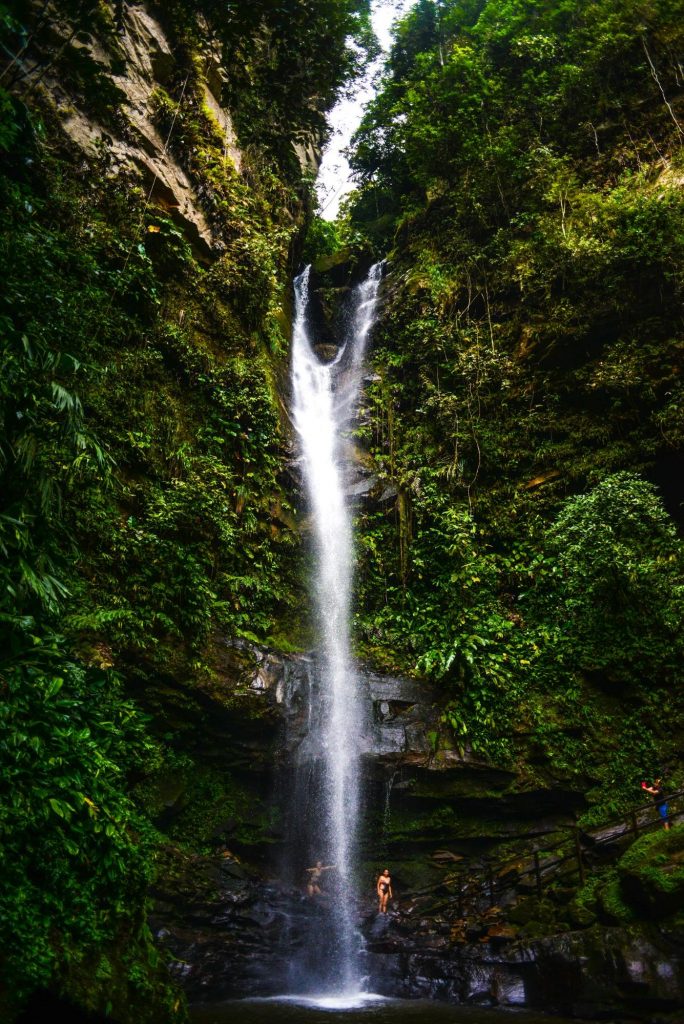
Near the Park of Legend a waterfall Ahuashiyacu—who was once a woman who became the spirit of the waterfall.
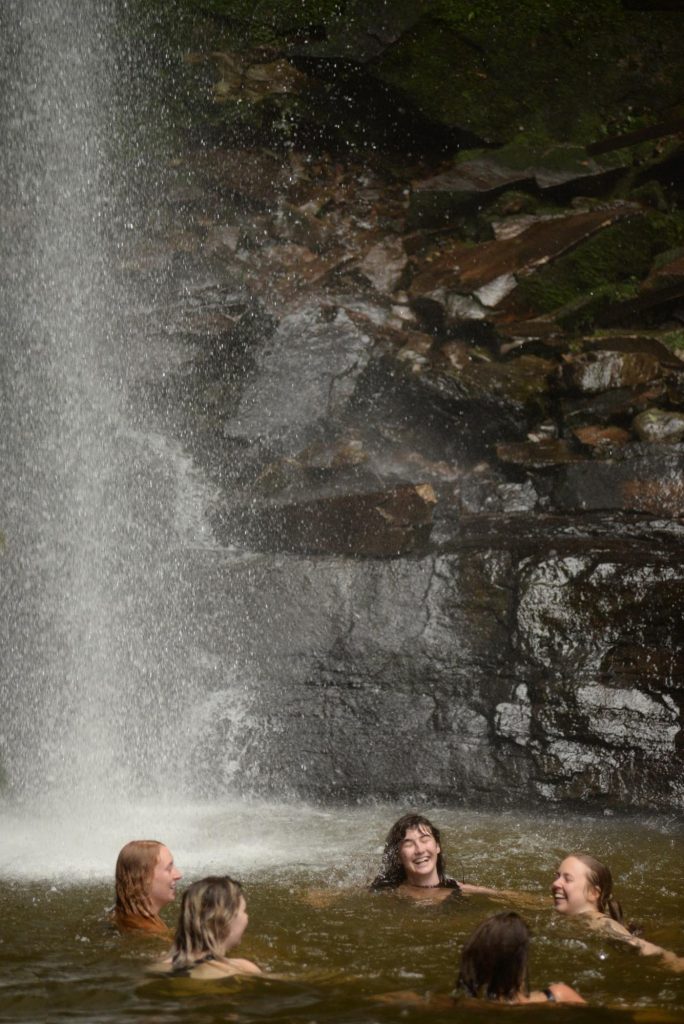
Our professor Dr. Frédérique Apffel-Marglin requests that we greet Ahuashiyacu to ask permission before entering her water.
On the ride home I ask our driver Jorge about the effects of deforestation in the area. He says that he’s noticed the climate of the region become much warmer. Without the vegetation there used to be, there is less shade and more sun, he says, and less rain as well. There is less water in general, he continues. The dry season has become drought season and the soil is depleted.
When I ask him if he thinks this trend has been sparked by the lack of respect for the spirits and legends, Jorge replies, “Certainly. People lack conscience nowadays.”
He adds that because people live off of agriculture, they are obligated to deforest in order to have fields. Jorge does say he believes there is a way to practice agriculture without the destruction of the forest, but that the government isn’t doing much to help.
I suddenly realize this is why the Sachamama Centre where we are studying is so important. It is helping revitalize sustainable Indigenous food systems in the area as well as promote the conscience and empathy they call for.
As Jorge drops us off back at the Centre I ask if when he was a kid there was more forest, and Jorge replies with an emphatic yes, pointing out the window. “All of this was forest,” he says.
Why isn’t Chullachaqui doing his job, I wonder aloud.
Jorge laughs, but adds solemnly that Chullachaqui is far away now. The forest isn’t big enough here for Chullachaqui, he says.
In the days to come, we will be getting our hands in the soil, exploring alternatives to clearing forest, alternatives where respectful relationships and reciprocation with the earth and its other-than-human beings are at the core—an exploration coming soon to a blog post near you!
[1] Rider Panduro and Grimaldo Rengifo, Montes and Montaraces (Lime: PRATEC Publishing, 2001), 89.

